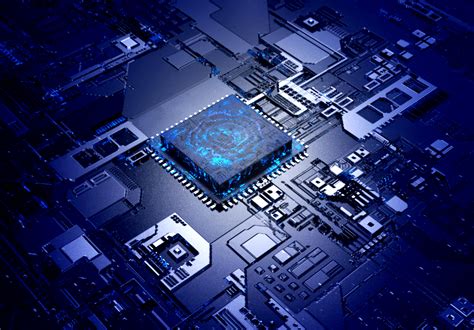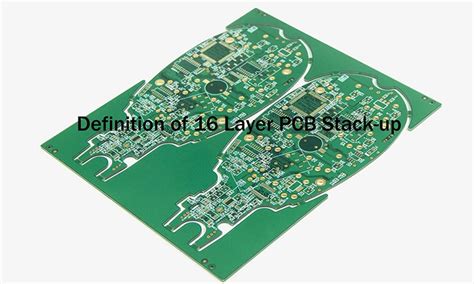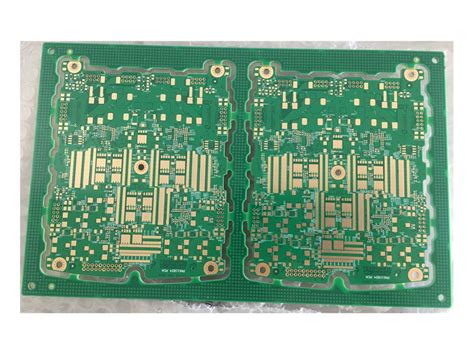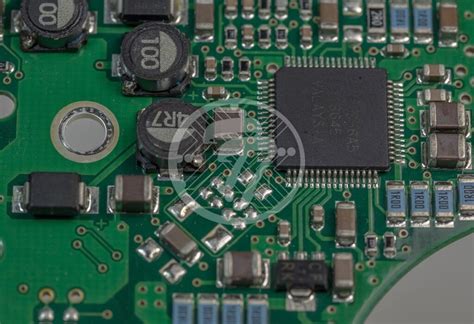Rf pcb simulation
Introduction To RF PCB Simulation: Key Concepts And Tools
RF PCB simulation is a critical process in the design and development of radio frequency printed circuit boards. This simulation involves the use of specialized software tools to model and analyze the behavior of RF circuits before they are physically manufactured. By simulating the performance of these circuits, engineers can identify potential issues, optimize designs, and ensure that the final product meets the desired specifications. Understanding the key concepts and tools involved in RF PCB simulation is essential for anyone working in the field of RF design.
One of the fundamental concepts in RF PCB simulation is the electromagnetic (EM) field analysis.
This analysis involves solving Maxwell’s equations to predict how electromagnetic fields will interact with the materials and structures on the PCB. EM field analysis is crucial for understanding signal integrity, crosstalk, and electromagnetic interference (EMI) in RF circuits. By accurately modeling these interactions, engineers can design PCBs that minimize signal loss and interference, leading to better overall performance.
Another important concept in RF PCB simulation is the use of S-parameters, or scattering parameters.
S-parameters describe how RF signals are transmitted and reflected through a network of components. They are essential for characterizing the behavior of RF circuits and are commonly used in the design and analysis of filters, amplifiers, and other RF components. By simulating S-parameters, engineers can gain insights into the performance of their designs and make necessary adjustments to achieve the desired results.
In addition to these key concepts, there are several tools available for RF PCB simulation.
One of the most widely used tools is the electromagnetic simulator, which allows engineers to model and analyze the EM fields on their PCBs. These simulators can handle complex geometries and materials, providing accurate predictions of how RF signals will behave in the real world. Some popular electromagnetic simulators include Ansys HFSS, CST Microwave Studio, and Keysight ADS.
Another important tool for RF PCB simulation is the circuit simulator.
Circuit simulators, such as SPICE (Simulation Program with Integrated Circuit Emphasis), allow engineers to model the electrical behavior of their circuits. These simulators can handle both linear and nonlinear components, making them ideal for analyzing the performance of RF circuits under various operating conditions. By combining circuit simulation with EM field analysis, engineers can gain a comprehensive understanding of their designs and ensure that they meet the required specifications.
Furthermore, layout tools play a crucial role in RF PCB simulation.
These tools allow engineers to create detailed layouts of their PCBs, including the placement of components, routing of traces, and definition of ground planes. By integrating layout tools with simulation software, engineers can perform layout-based simulations that take into account the physical characteristics of the PCB. This integration helps to identify potential issues related to signal integrity, crosstalk, and EMI early in the design process, reducing the risk of costly rework and delays.
In conclusion, RF PCB simulation is an essential process for designing high-performance RF circuits. By understanding the key concepts of EM field analysis and S-parameters, and utilizing specialized tools such as electromagnetic simulators, circuit simulators, and layout tools, engineers can optimize their designs and ensure that they meet the desired specifications. The integration of these tools and concepts allows for a comprehensive analysis of RF circuits, leading to improved performance and reliability in the final product.

Best Practices For Accurate RF PCB Simulation
Accurate RF PCB simulation is a critical aspect of modern electronics design, ensuring that radio frequency circuits perform as intended in real-world applications. To achieve precise results, it is essential to adhere to best practices that encompass various stages of the simulation process. By following these guidelines, designers can mitigate potential issues and enhance the reliability of their RF circuits.
One of the fundamental steps in RF PCB simulation is the meticulous definition of the design parameters.
This involves specifying the material properties, such as dielectric constant and loss tangent, which significantly influence the behavior of high-frequency signals. Accurate material characterization is crucial, as even minor deviations can lead to substantial discrepancies between simulated and actual performance. Therefore, it is advisable to use material data provided by reputable manufacturers or to conduct in-house measurements if possible.
Transitioning to the layout phase, the importance of precise geometric representation cannot be overstated.
Ensuring that the physical dimensions of traces, pads, and vias are accurately modeled is vital for reliable simulation outcomes. This includes accounting for manufacturing tolerances and potential variations in the fabrication process. Additionally, the layout should minimize discontinuities and impedance mismatches, which can cause signal reflections and degrade performance. Employing techniques such as controlled impedance routing and proper grounding practices can help achieve this goal.
Another critical aspect is the selection of appropriate simulation tools and models.
High-frequency simulations require specialized software capable of handling the complexities of RF behavior. Electromagnetic (EM) simulation tools, such as finite element method (FEM) or method of moments (MoM) solvers, are commonly used to analyze the electromagnetic fields and interactions within the PCB. It is essential to choose tools that offer a balance between accuracy and computational efficiency, as overly simplified models may overlook critical effects, while excessively detailed simulations can be time-consuming and resource-intensive.
Furthermore, boundary conditions and excitation sources must be carefully defined to reflect the actual operating environment of the RF circuit.
This includes specifying the correct port types, such as wave ports or lumped ports, and ensuring that the simulation domain adequately represents the physical boundaries of the PCB. Properly setting up these parameters helps in obtaining realistic results that closely match the behavior of the actual circuit.
In addition to the technical aspects, iterative validation and verification play a pivotal role in achieving accurate RF PCB simulations.
This involves comparing simulation results with empirical measurements and refining the model based on observed discrepancies. By conducting a series of simulations and adjustments, designers can progressively enhance the fidelity of their models. It is also beneficial to perform sensitivity analyses to understand how variations in design parameters affect the overall performance, thereby identifying critical factors that require precise control.
Moreover, collaboration and knowledge sharing among team members can significantly improve the simulation process.
Leveraging the expertise of colleagues and engaging in peer reviews can uncover potential issues and provide valuable insights. Documenting the simulation setup, assumptions, and results in a comprehensive manner ensures that the knowledge gained is preserved and can be referenced in future projects.
In conclusion, accurate RF PCB simulation is a multifaceted endeavor that demands attention to detail, appropriate tool selection, and iterative refinement. By adhering to best practices, such as precise material characterization, meticulous layout design, careful definition of simulation parameters, and collaborative validation efforts, designers can achieve reliable and accurate simulations. These practices not only enhance the performance of RF circuits but also contribute to the overall success of electronic products in an increasingly competitive market.

Common Challenges In RF PCB Simulation And How To Overcome Them
RF PCB simulation is a critical process in the design and development of radio frequency printed circuit boards. However, it is fraught with numerous challenges that can impede the accuracy and efficiency of the simulation process.
One of the most common challenges is the complexity of accurately modeling the electromagnetic behavior of RF signals.
RF signals are highly sensitive to various factors such as impedance mismatches, parasitic elements, and signal integrity issues. These factors can significantly affect the performance of the RF PCB, making it essential to have precise simulation models. To overcome this challenge, designers can use advanced simulation tools that offer high-fidelity modeling capabilities. These tools can simulate the electromagnetic behavior of RF signals with greater accuracy, thereby providing more reliable results.
Another significant challenge in RF PCB simulation is the management of thermal effects. RF components often generate substantial amounts of heat, which can affect the performance and reliability of the PCB. Thermal effects can lead to signal degradation, component failure, and reduced lifespan of the PCB. To address this issue, designers can incorporate thermal management techniques such as heat sinks, thermal vias, and proper component placement. Additionally, simulation tools that integrate thermal analysis can help predict and mitigate thermal issues during the design phase, ensuring that the final product operates within safe temperature limits.
Signal integrity is another critical aspect that poses challenges in RF PCB simulation.
High-frequency signals are prone to various integrity issues such as crosstalk, reflection, and electromagnetic interference (EMI). These issues can distort the signal, leading to data loss and communication errors. To mitigate signal integrity problems, designers can use techniques such as controlled impedance routing, proper grounding, and the use of shielding materials. Simulation tools that offer signal integrity analysis can also help identify potential issues and optimize the design to ensure robust signal transmission.
Material selection is another area where challenges often arise in RF PCB simulation.
The choice of materials can significantly impact the performance of the RF PCB. Materials with high dielectric constants and low loss tangents are typically preferred for RF applications. However, selecting the right material involves a trade-off between performance, cost, and manufacturability. To make informed decisions, designers can use simulation tools that allow for the evaluation of different materials and their impact on the overall performance of the PCB. This enables designers to select materials that offer the best balance between performance and cost.
Finally, the integration of multiple RF components on a single PCB can introduce additional challenges.
The interaction between different components can lead to interference and signal degradation. To overcome this, designers can use layout optimization techniques such as proper component spacing, isolation of sensitive components, and the use of ground planes. Simulation tools that support multi-component analysis can also help in identifying and mitigating potential issues arising from component interactions.
In conclusion, RF PCB simulation presents several challenges that can affect the accuracy and reliability of the final product. However, by leveraging advanced simulation tools and employing best practices in design and layout, these challenges can be effectively addressed. Accurate electromagnetic modeling, thermal management, signal integrity analysis, material selection, and component integration are all critical factors that need to be considered to ensure the successful design and development of RF PCBs. By overcoming these challenges, designers can achieve high-performance, reliable, and cost-effective RF PCBs that meet the stringent requirements of modern RF applications.
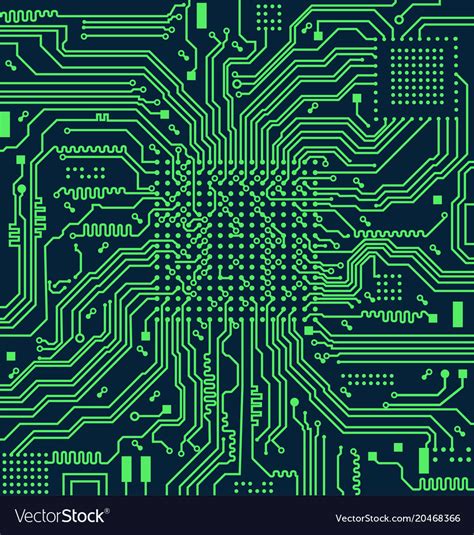
Advanced Techniques For Optimizing RF PCB Performance Through Simulation
In the realm of modern electronics, Radio Frequency (RF) Printed Circuit Boards (PCBs) play a pivotal role in ensuring the efficient transmission and reception of signals. As the demand for high-speed communication and wireless technologies continues to surge, optimizing the performance of RF PCBs has become increasingly critical. One of the most effective ways to achieve this optimization is through advanced simulation techniques. By leveraging sophisticated simulation tools, engineers can predict and mitigate potential issues, thereby enhancing the overall performance and reliability of RF PCBs.
To begin with, RF PCB simulation allows for a comprehensive analysis of electromagnetic behavior within the circuit.
This is crucial because RF signals are highly susceptible to interference and signal loss, which can significantly degrade performance. Through simulation, engineers can visualize the electromagnetic fields and identify areas where signal integrity might be compromised. This enables them to make informed decisions about component placement, trace routing, and grounding strategies, all of which are essential for minimizing interference and ensuring robust signal transmission.
Moreover, simulation tools provide the capability to model the effects of various materials used in the PCB.
Different substrates and dielectric materials can have a profound impact on signal propagation and impedance characteristics. By simulating these effects, engineers can select the most appropriate materials that will optimize performance while also considering factors such as cost and manufacturability. This material selection process is particularly important in RF applications, where even minor variations can lead to significant performance differences.
In addition to material considerations, advanced simulation techniques also facilitate the analysis of thermal effects on RF PCBs.
High-frequency signals can generate substantial heat, which, if not properly managed, can lead to component failure and reduced reliability. Thermal simulation allows engineers to predict temperature distribution across the PCB and identify hotspots that may require additional cooling measures. By addressing thermal issues early in the design process, engineers can ensure that the final product will operate reliably under various environmental conditions.
Another critical aspect of RF PCB simulation is the ability to perform signal integrity analysis.
This involves examining how signals propagate through the PCB and identifying potential issues such as reflections, crosstalk, and impedance mismatches. Signal integrity analysis is essential for maintaining the quality of high-frequency signals and preventing data corruption. Through simulation, engineers can optimize trace geometries, via placements, and termination strategies to minimize these issues and ensure clean signal transmission.
Furthermore, simulation tools enable the evaluation of electromagnetic compatibility (EMC) and electromagnetic interference (EMI) performance.
RF PCBs must comply with stringent regulatory standards to prevent interference with other electronic devices. By simulating EMC and EMI behavior, engineers can identify potential sources of interference and implement design changes to mitigate these effects. This proactive approach not only ensures compliance with regulations but also enhances the overall performance and reliability of the RF PCB.
In conclusion, advanced simulation techniques are indispensable for optimizing the performance of RF PCBs. By providing detailed insights into electromagnetic behavior, material effects, thermal management, signal integrity, and EMC/EMI performance, simulation tools empower engineers to make informed design decisions. This results in RF PCBs that are not only high-performing but also reliable and compliant with industry standards. As the demand for sophisticated wireless technologies continues to grow, the role of simulation in RF PCB design will undoubtedly become even more critical, driving innovation and excellence in the field of electronics.



